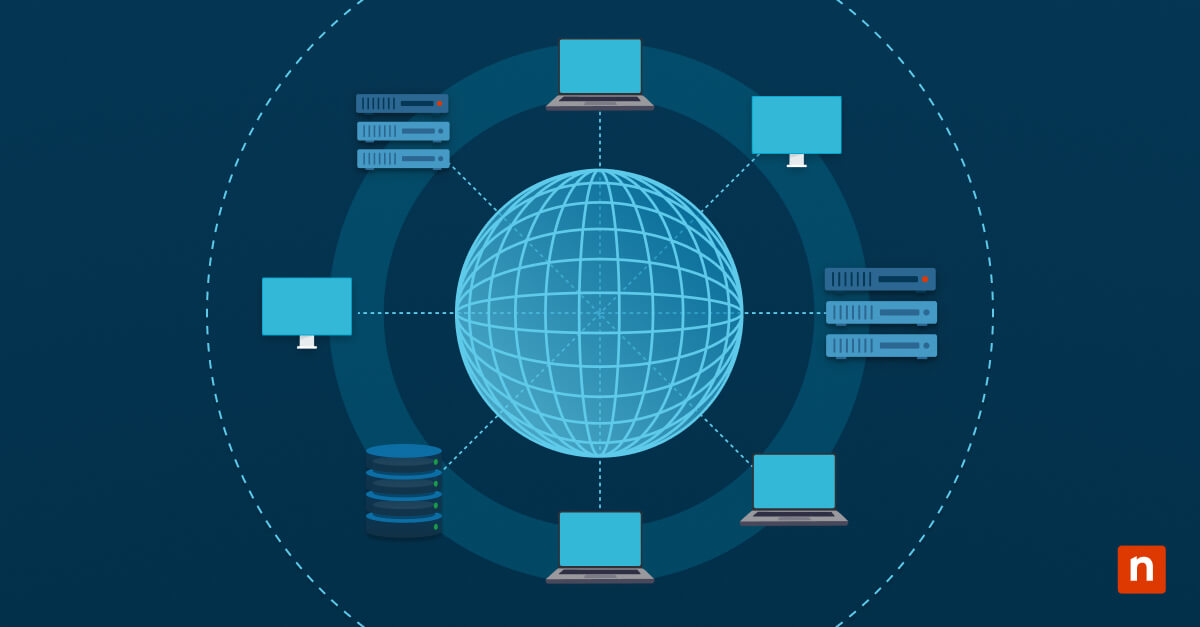Although most companies may survive a data breach incident, the repercussions remain costly when customer data is involved. A ransomware attack on an MSP can lead to years of litigation and a hefty fine from regulators if proven liable.
Poor security configurations and threat actors also don’t paint the full picture. Some organizations do have data protection protocols, but the measures are just outdated. This lack of proactiveness is why vulnerability management fails even in established IT environments.
Vulnerability management has to be a continuous process. As threats evolve with data infrastructures, so, too, should data protection.
On that note, if you’re looking for a starter kit or a refresher on how to create a robust vulnerability management system, this guide will introduce you to its core components and some of the framework’s key benefits for IT management and MSPs.
🛑 Patch management is part of any robust vulnerability management framework.
What is vulnerability management
Vulnerability management isn’t a remediation process you deploy once—it’s a proactive and evolving solution that scales with your IT stack and emerging threats. Four key steps exist in every successful vulnerability management process:
- Locate and identify: Find vulnerabilities and contain them.
- Evaluate: Evaluate gaps and prioritize according to existing protocols.
- Monitor and remediate: Remediate the threat and monitor impacted systems.
- Confirm: Validate if the vulnerability has been contained or mitigated as intended.
These procedures are all essential to planning and implementation. You can learn more about them in this comprehensive “4 Key Steps of a Vulnerability Management Process” guide.
Understanding the vulnerability management framework
A vulnerability management system isn’t just a tool or set of procedures to be used in an emergency; it’s proactive and ongoing. It’s a lifecycle as much as it is a framework, which begins, like all great schemes, with planning and improves upon continuous application and documentation. Then, of course, all of that work feeds into a fresh round of assessment and adaptation. Thus, a cycle.
Some of the core features to consider for your vulnerability management system are as follows:
- Asset discovery and inventory
- Vulnerability scanning
- Configuration management
- Penetration testing
- Threat protection and intelligence
- Patch management
- IT automation system
- Dashboards and reporting tools
These features may be adapted or changed according to your organization’s needs. An IT management software like NinjaOne Endpoint Management®, which consolidates many of these features in a single platform, is also available to make the integration easy for complex or distributed IT networks.
5 stages of a vulnerability management lifecycle
Adding to that, a typical round of a vulnerability management lifecycle has five stages.

0. Vulnerability planning
During this ideation stage, you and your IT team discuss the details of your vulnerability management process, including which stakeholders will be involved, the resources required, your action plans and response strategies, and any metrics for success.
We’ve labeled this as the “0” step because this stage does not need to be repeated before every round of the cycle. That said, regularly revisiting vulnerability planning is still a good practice to ensure your vulnerability management framework remains effective.
1. Vulnerability assessment
The cycle formally kicks off with vulnerability assessment, including an asset inventory of all hardware and software in your IT network. After identifying your assets, you can assess each for its vulnerabilities using vulnerability scanners, pen tests, and external threat intelligence.
2. Vulnerability prioritization
During this stage, your security team will prioritize the vulnerabilities analyzed from the previous stage. This step ensures that the most critical vulnerabilities are remediated first. To measure high criticality, consider its patch common vulnerabilities and exposures (CVE), its potential impact, the likelihood of exploitation, and weeding out any false positives.
3. Vulnerability resolution
After working through the list of prioritized vulnerabilities, you have three options to address the vulnerabilities: vulnerability remediation, patch management, and mitigation. That said, you should also consider that not all detected vulnerabilities must be managed further.
Some may be low-impact or too resource-intensive to fix. In these cases, an organization may choose to contain or accept the vulnerability.
4. Verification and monitoring
The security team rescans and retests the assets they’ve just worked on. This process is usually in place to verify that your resolution efforts have worked as intended and ensures that they did not inadvertently introduce new problems.
This stage also implements regular monitoring, which creates opportunities to look for undiscovered vulnerabilities, old resolution actions that may have grown obsolete, and any other actions that may require changes or updates.
5. Reporting and improving
At the end of each vulnerability management cycle, your security team must document its results, including any identified vulnerabilities, resolutions taken, and their outcomes. These reports must be shared with relevant stakeholders.
More importantly, these new data must be utilized to fortify your processes and address emerging threats.
Why is vulnerability management important?
Threat actors continuously attempt to exploit weaknesses in IT environments. Though managing these IT vulnerabilities may take a lot of time and effort, it is essential for your organization’s cybersecurity.
Having a vulnerability management system should be among the highest priorities of organizations, especially within IT environments. Skybox Security reports, “Vulnerabilities have more than tripled over the past ten years.” They also report that cybercrime continues to evolve and become more complex.
In fact, Verizon’s 2025 Data Breach Investigations Report indicated that about 34% of breaches during the past year were from attackers exploiting vulnerabilities to get initial access to their targets, up from last year. As a result, vulnerability management systems are becoming more crucial in order to assert a level of control over this ever-present issue in the IT space.
Key benefits of vulnerability management
A vulnerability management system enables businesses of all sizes across all industries to identify and address potential security issues before they have any significant organizational impact.
By preventing data breaches and other security weaknesses, a vulnerability system can prevent financial and reputational damage to the organization. Some other benefits include:
Improved security and control
Creating an effective vulnerability management plan can improve your overall security posture. For one, it helps establish an adaptable threat prevention strategy, which should identify and diagnose vulnerabilities before attackers can exploit them. Furthermore, the system can be leveraged to enforce internal policies and meet regulatory compliance.
Visibility and reporting
Vulnerability management provides centralized, up-to-date reporting on the status of your current security protocols and infrastructure. In addition, security automation can provide a comprehensive and real-time look at your IT network, boosting your coverage and response times to IT-related incidents.
Operational efficiencies
Businesses can strengthen their operational efficiency by decreasing the amount of time required to recover from an incident if it occurs. Having a system that can identify threats early means there will be fewer reactive and urgent fixes, which are both prone to risks.
Automation opportunities also significantly contribute to this area, as these solutions help streamline workflows and facilitate resource optimization.
Regulatory and standards compliance
A vulnerability management system supports frameworks like PCI DSS, HIPAA, NIST, ISO 27001, and GDPR. As a result, it provides great value for multinational organizations and those working in tandem with global partners. This approach also boosts brand reputation and actively helps in avoiding fines and sanctions.
Understand risk before it strikes. Watch what is vulnerability management? how to reduce vulnerabilities now.
How NinjaOne fits into your vulnerability management process
NinjaOne, an endpoint management company trusted by 20,000+ clients worldwide, offers its #1 patch management system, which enables you to automate multi-OS patching in a single pane of glass. Its robust system can reduce vulnerabilities by up to 75% with its ad-hoc scans and granular control supported by the native inclusion of CVE/CVSS.
If you’re ready, request a free quote, sign up for a 14-day free trial, watch our vulnerability importer demo, or watch a patch management demo.








